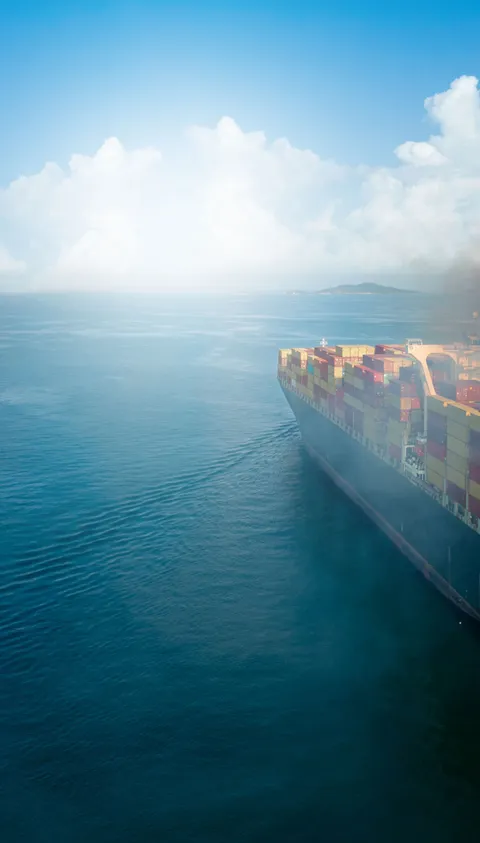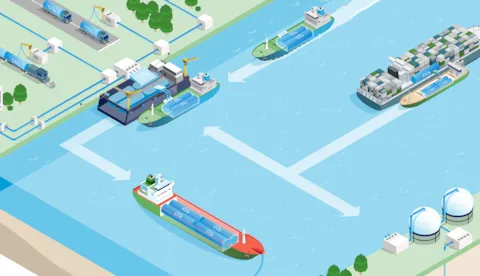

Onboard carbon capture in a nutshell
Onboard carbon capture (OCC) covers a range of technologies to capture carbon dioxide emissions from ships during operation. For post-combustion systems, OCC involves cleaning of exhaust gases from CO2, separating it, and storing it onboard for eventual offloading, in various different forms depending on the technology (gas, liquid, or mineral). For pre-combustion, carbon is separated from the fuel to produce hydrogen and use it in dedicated energy conversion machinery.
Onboard carbon capture is gaining more and more interest as an effective solution to reduce carbon emissions from ships. The competition for the green energy carriers such as ammonia, hydrogen and methanol will be fierce, not only within maritime but also with other industries, and hence expensive. Onboard carbon capture can be an effective decarbonization measure, allowing continued use of well-established maritime fuels.
Carbon capture technology itself is a well-known technology for land-based and offshore applications, however for shipping application it is still novel. With CCUS infrastructure in development, using capture technology on ships may become an essential element in the decarbonization of shipping.
Onboard carbon capture and treatment systems need to be integrated with other systems onboard, and the CO2 needs to be intermediately stored for later offloading to appropriate infrastructure. This will influence the design and lay-out of the ships.
How DNV can support:
- Additional energy and fuel consumption on ship. The capture, separation and liquefaction process requires energy and increased power demand from the ship machinery.
- Optimal integration with ship systems. Onboard carbon capture systems need to be integrated with the machinery onboard, optimizing energy utilization without impairing the operation of the vessel.
- Location of capture and storage components. Equipment for capture, separation, liquefaction and intermediate storage requires ample room, and planning for this needs careful consideration.
- Safety and performance/emission regulations. Systems need to be carefully designed and integrated onboard to maximize performance and maintain the safety of the vessel.
Key services for onboard carbon capture:
- Feasibility support. Evaluation of the feasibility and potential benefits of introducing a carbon capture system onboard a given vessel or vessel design.
- Technology qualification. Development of a structured process to qualify new technology for a given application.
- Techno-economical studies. Considering investment and operations costs to evaluate and compare different systems and designs.
- Approval in Principle. DNV can provide early technical verification of documentation of a specific design or design part, based on applicable Rules and Regulations.
- Classification. Verification and certification of final design ready for construction.
PROJECTS AND RESEARCH



Maritime Forecast to 2023
RECOMMENDED PRACTICES, GUIDELINES, PRODUCTS
DNV is the leader in the development of CCS recommended practices, guidelines and international standards.
